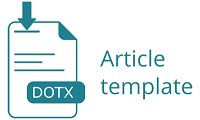Evaluation on The Use of Antibiotics for Pneumonia Patients
DOI:
https://doi.org/10.32807/jkp.v15i2.635Keywords:
Pneumonia, Antibiotics, HospitalAbstract
Pneumonia is an acute infectious disease that attacks lung tissue (alveoli) which can be caused by viral, bacterial, or fungal infections. Pneumonia is one of the diseases that have the highest death risk in Indonesia. The first line of treatment for pneumonia is antibiotic therapy. Inappropriate use of antibiotics will increase the possibility of antibiotic resistance. Antimicrobial Control Program (PPRA) is a health surveillance to control the use of antibiotics where the indicator of success is seen from the improvement in the quantity and quality of antibiotic use. Antibiotic control that can be performed is evaluating the use of antibiotics quantitatively and evaluating the suitability of antibiotics. The purpose of this study was to determine the quantity of antibiotic use with the DDD/100 patient-days unit and the suitability of the use of antibiotics based on PPAB. This study was observational, the data were taken retrospectively and analyzed descriptively. The research material used medical record data for pneumonia patients from January to June 2020 at RSUD Bangil. There were 91 research samples obtained by purposive sampling that met the inclusion and exclusion criteria. The data were analyzed quantitatively using the DDD/100 patient-days unit and 90% DU, and the suitability of antibiotics was analyzed using five indicators of the right indication, the right route, the right dose, the right interval, and the right time of administration. The results showed the use of antibiotics with a total value of DDD/100 patient-days of 78.13 DDD/100 patient-days with the highest value on moxifloxacin (39.28 DDD/100 patient-days). Antibiotics included in the 90% segment that need to be controlled are parenteral moxifloxacin (50.27%), ceftriaxone (23.34%), azithromycin (6.83%), oral moxifloxacin (4.62%), and levofloxacin (3.85%). The suitability of antibiotics based on PPAB RSUD Bangil 2019 showed the right indication (51.65%), right route (100%), right dose (87.23%), right interval (48.93%), and right time of administration (10.64). %).
References
Alkindi FF, Yulia R, Herawati F, & Jaelani AK. Influence of historical use of antibiotics toward antibiotic resistance. Farmasains : Jurnal Farmasi Dan Ilmu Kesehatan. 2019;4(1):9-12.
Almirall J, Serra-Prat M, BolÃbar I, & Balasso V. Risk Factors for Community-Acquired Pneumonia in Adults: A Systematic Review of Observational Studies. Respiration. 2017;94(3):299–311.
Arrang ST, Cokro F, & Sianipar EA. Rational Antibiotic Use by Ordinary People in Jakarta. MITRA: Jurnal Pemberdayaan Masyarakat. 2019;3(1):73–82.
Forum of International Respiratory Societies. The Global Impact of Respiratory Disease. In Forum of International Respiratory Societies. 2017.
Gallagher J, & MacDougall C. Antibiotics Simplified Third Edition. Burlington: Jones & Barlett Learning. 2014. Hlm 69-83.
Grief SN, & Loza JK. Guidelines for the Evaluation and Treatment of Pneumonia. Primary Care - Clinics in Office Practice. 2018;45(3):485–503.
Hasan H, & Maranatha RA. Perubahan Fungsi Paru Pada Usia Tua. Jurnal Respirasi. 2019;3(2):52-57.
Ilmi T, Yulia R, & Herawati F. Evaluasi Penggunaan Antibiotik Pada Pasien Pneumonia di Rumah Sakit Umum Daerah Tulungagung. JAFI. 2020;1(2):102–112.
Irawan R, Reviono, Harsini. Korelasi Kadar Copeptin dan Skor PSI dengan Waktu Teapi Sulih Antibiotik Intravena ke Oral dan Lama Hari Rawat Pneumonia Komunitas. Jurnal Respirologi. 2019;39(1):44-53.
Kementerian Kesehatan RI. Peraturan Menteri Kesehatan Republik Indonesia. Peraturan Menteri Kesehatan No. 2406 TAHUN 2011 Tentang Pedoman Umum Penggunaan Antibiotik. Jakarta. 2011;73.
Kementerian Kesehatan RI. Peraturan Menteri Kesehatan nomor 8 tahun 2015. Pedoman Pencegaha Dan Pengendalian Resistensi Antimikroba. Jakarta. 2015;334:1–31.
Metlay JP, Waterer GW, Long AC, Anzueto A, Brozek J, Crothers K, dkk. Diagnosis and Treatment of Adults with Community-acquired Pneumonia. American Thoracic Society Documents. 2019;200(7):e45-e67.
PDPI. Pneumonia Komunitas: Pedoman Diagnosis dan Penatalaksanaan di Indonesia Edisi II. Indonesia: PDPI. 2014
PPAB RSUD Bangil. Panduan Penggunaan Antibiotik Rumah Sakit Umum Daerah Bangil Kabupaten Pasuruan. Pasuruan. 2019
Rachmawati S, Fazeri RL, & Norcahyanti I. Gambaran Penggunaan Antibiotik di Bangsal Penyakit Dalam RSUD Bangil Kabupaten Pasuruan. JPSCR: Journal of Pharmaceutical Science and Clinical Research. 2020;5(1):12-21.
RISKESDAS. Badan Penelitian dan Pengembangan Kesehatan Kementrian Republik Indonesia Tahun 2013. Jakarta: Balitbangkes. 2014.
RISKESDAS. Badan Penelitian dan Pengembangan Kesehatan Kementrian Republik Indonesia Tahun 2018. Jakarta: Balitbangkes. 2019
Safitri S. Evaluasi Penggunaan Antibiotik Pada Pasien Pneumonia Di Instalasi Rawat Inap Rs “X†Klaten Tahun 2015. Universitas Muhammadiyah Surakarta. 2015;1-12.
Stein, SM. Boh’sPharmacy Practice Manual: A Guide to the Clinical Experience Fourth Edition. In Journal of Chemical Information and Modeling. 2015;53(9):325-359.
Tambun SH, Puspitasari I, & Laksanawati IS. Evaluasi Luaran Klinis Terapi Antibiotik pada Pasien Community Acquired Pneumonia Anak Rawat Inap. Jurnal Manajemen Dan Pelayanan Farmasi (Journal of Management and Pharmacy Practice). 2019;9(3):213-224.
Wattiheluw MH, Herawati F, Setiasih, & Yulia R. Correlation of Knowledge and Beliefs to Adherence with Antibiotic Use in Adult Patients at A Private Hospital in Sidoarjo. Kesmas. 2020;15(2):99–104.
Yulia R, Mariza JW, Soedarsono, & Herawati F. Bacterial Profile and Antibiotic Use in Pneumonia Patients at Dr. Soetomo General Hospital. Current Respiratory Medicine Reviews, 2020;16(1):21–27.
WHO. Pneumonia. Jenewa, Swiss: WHO. 2019.




